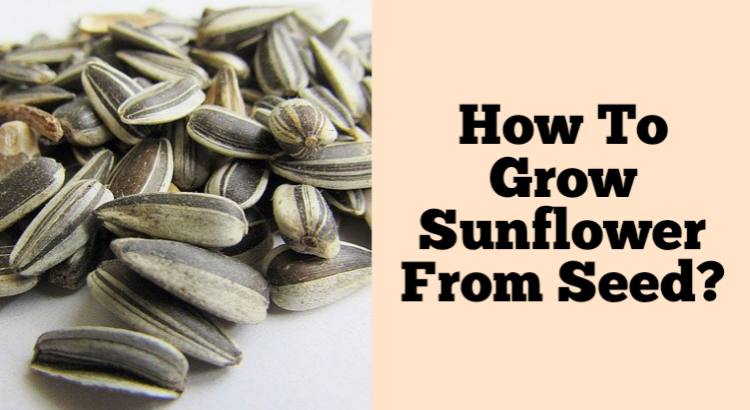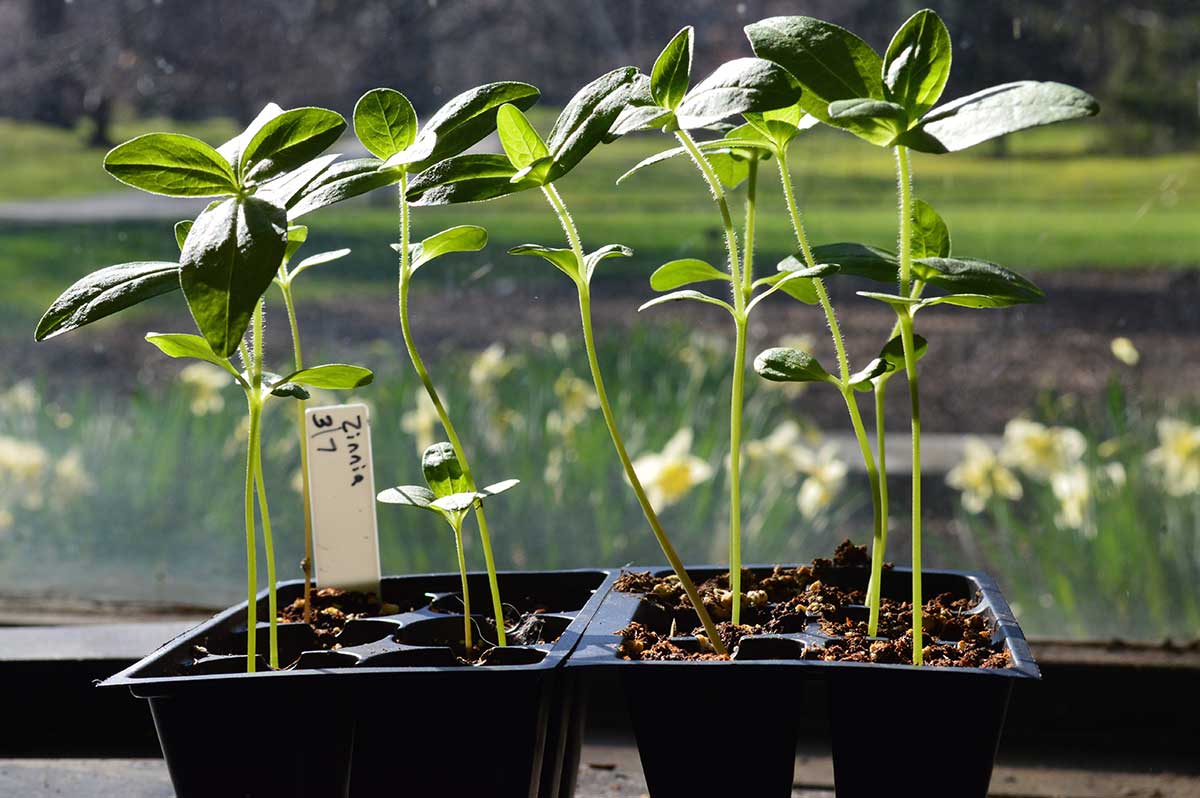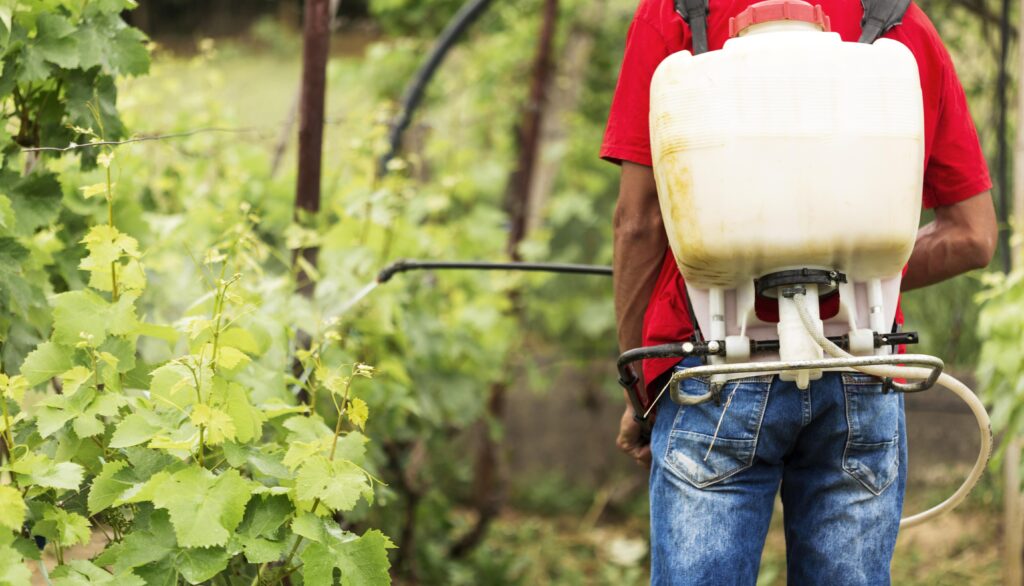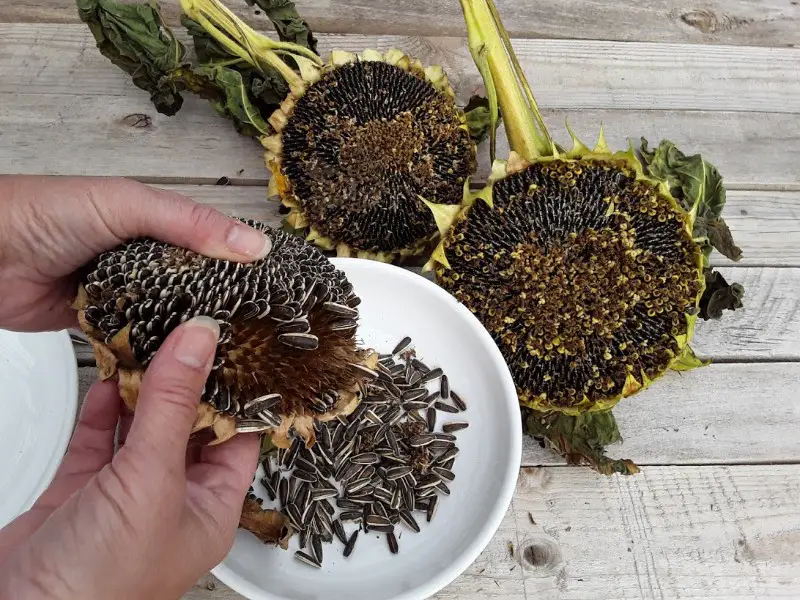Preparing for Success: Choosing the Right Sunflower Variety
When it comes to growing sunflowers, selecting the right variety is crucial for a successful harvest. With over 70 different species of sunflowers, choosing the right one can be overwhelming. However, by considering a few key factors, you can narrow down your options and find the perfect variety for your needs.
One of the most important factors to consider is climate. If you live in an area with a short growing season, you’ll want to choose a variety that matures quickly, such as ‘Teddy Bear’ or ‘Sungold’. These varieties produce smaller blooms, but they mature in as little as 50 days. On the other hand, if you live in an area with a long growing season, you can choose a variety that produces larger blooms, such as ‘Mammoth’ or ‘Velvet Queen’. These varieties take around 90 days to mature, but they produce massive blooms that can reach up to 12 inches in diameter.
Another factor to consider is soil type. Sunflowers prefer well-draining soil that is rich in organic matter. If your soil is heavy clay or sandy, you may want to choose a variety that is more tolerant of these conditions, such as ‘Red Sun’ or ‘Soraya’. These varieties have deeper roots that allow them to access water and nutrients more easily.
Finally, consider the desired bloom size. If you want to grow sunflowers for their edible seeds, you’ll want to choose a variety that produces larger blooms, such as ‘Mammoth’ or ‘Velvet Queen’. These varieties produce more seeds per bloom, making them ideal for harvesting. On the other hand, if you want to grow sunflowers for their ornamental value, you may want to choose a variety that produces smaller blooms, such as ‘Teddy Bear’ or ‘Sungold’. These varieties produce more blooms per plant, making them ideal for adding a pop of color to your garden.
By considering these factors, you can choose the right sunflower variety for your needs and set yourself up for success. Whether you’re growing sunflowers for their edible seeds or their ornamental value, choosing the right variety is the first step towards a successful harvest. When learning how to plant sunflower seedlings, it’s essential to start with a variety that is well-suited to your climate, soil type, and desired bloom size.
Getting Your Seedlings Ready: Sowing and Caring for Indoor Seedlings
Once you’ve selected the right sunflower variety for your needs, it’s time to start sowing seeds indoors. This step is crucial in giving your seedlings a head start on the growing season. To sow sunflower seeds indoors, you’ll need a few basic supplies, including a seed starting mix, containers, and a warm location with adequate light.
When it comes to choosing a seed starting mix, look for a high-quality mix that is specifically designed for starting seeds indoors. This type of mix will typically be finer and more sterile than regular potting soil, which will help prevent seedlings from becoming waterlogged and developing root rot.
For containers, you can use small pots or cell packs specifically designed for starting seeds. Make sure the containers have drainage holes in the bottom to prevent water from accumulating in the soil. Fill the containers with the seed starting mix, and plant the sunflower seeds about ¼ inch deep and 1-2 inches apart. Cover the seeds with a thin layer of the mix, and water gently but thoroughly.
Provide your seedlings with adequate light by placing them in a sunny windowsill or under grow lights. Sunflowers require a lot of light to grow, so make sure they’re getting at least 6 hours of direct sunlight per day. Keep the soil consistently moist but not waterlogged, and maintain a temperature of around 70-80°F (21-27°C) during the day and around 60-70°F (15-21°C) at night.
As your seedlings grow, you’ll need to fertilize them regularly to promote healthy growth. Use a balanced, water-soluble fertilizer, and follow the instructions on the label for application rates. You can also prune your seedlings to encourage bushy growth and prevent them from becoming leggy.
By following these steps, you’ll be able to give your sunflower seedlings a strong start indoors. When learning how to plant sunflower seedlings, it’s essential to provide them with the right conditions to grow and thrive. With proper care and attention, your seedlings will be ready to transplant outdoors in no time.
Hardening Off: Preparing Your Seedlings for Outdoor Conditions
Before transplanting your sunflower seedlings outdoors, it’s essential to harden them off to prevent shock and ensure a smooth transition. Hardening off is the process of gradually exposing seedlings to outdoor conditions, including sunlight, wind, and temperature fluctuations.
To harden off your sunflower seedlings, start by moving them to a shaded outdoor area, such as a patio or a north-facing wall, for 1-2 hours a day. This will allow them to get used to the outdoor light and temperature without being exposed to direct sunlight. Gradually increase the duration and intensity of outdoor exposure over the next 7-10 days.
During this time, monitor your seedlings closely for signs of stress, such as wilting or yellowing leaves. If you notice any of these symptoms, reduce the duration and intensity of outdoor exposure and give your seedlings more time to adjust.
It’s also essential to acclimate your seedlings to wind and temperature fluctuations. You can do this by placing them in a location that receives gentle breezes and is protected from extreme temperatures. Avoid placing your seedlings in areas with standing water or where water may collect, as this can lead to root rot and other problems.
By hardening off your sunflower seedlings, you’ll be able to give them the best possible start when transplanting them outdoors. This process is a critical step in learning how to plant sunflower seedlings, as it helps prevent shock and ensures a smooth transition to outdoor conditions.
Some common mistakes to avoid when hardening off sunflower seedlings include exposing them to direct sunlight too quickly, not providing enough wind protection, and not monitoring them closely for signs of stress. By avoiding these mistakes and following the steps outlined above, you’ll be able to give your sunflower seedlings the best possible start and set them up for success in the garden.
Transplanting Seedlings: A Step-by-Step Guide
Once your sunflower seedlings have been hardened off, it’s time to transplant them outdoors. This process requires careful planning and execution to ensure that your seedlings thrive in their new environment. Here’s a step-by-step guide on how to transplant sunflower seedlings:
Step 1: Prepare the Soil
Before transplanting your seedlings, make sure the soil is ready. Sunflowers prefer well-draining soil that is rich in organic matter. Test the pH of your soil and adjust it if necessary. Most sunflower varieties prefer a slightly acidic to neutral soil pH (around 6.0-7.0).
Step 2: Dig the Right-Sized Hole
Dig a hole that is about 1-2 inches deeper and 2-3 times wider than the container your seedling is currently in. This will give the roots of your sunflower seedling enough room to grow and establish themselves.
Step 3: Handle the Seedlings Gently
When handling your sunflower seedlings, be gentle to avoid damaging the roots or disturbing the soil. Carefully remove the seedling from its container and place it in the hole. Make sure the soil level is the same as it was in the container.
Step 4: Fill in the Hole
Fill in the hole with soil, gently firming it around the roots of the seedling. Make sure not to compact the soil too much, as this can prevent the roots from growing.
Step 5: Water Thoroughly
Water your sunflower seedling thoroughly after transplanting. This will help settle the soil and provide enough moisture to support establishment.
By following these steps, you’ll be able to successfully transplant your sunflower seedlings outdoors. Remember to provide full sun and well-draining soil for optimal growth. When learning how to plant sunflower seedlings, it’s essential to get the transplanting process right to ensure a healthy and thriving plant.
Optimizing Soil and Sunlight for Healthy Growth
Sunflowers require full sun and well-draining soil to grow and thrive. When learning how to plant sunflower seedlings, it’s essential to optimize the soil and sunlight conditions to promote healthy growth.
Soil pH is a critical factor in sunflower growth. Most sunflower varieties prefer a slightly acidic to neutral soil pH (around 6.0-7.0). To test the pH of your soil, you can purchase a soil testing kit or send a sample to a laboratory for analysis. If your soil pH is too high or too low, you can adjust it by adding lime or sulfur.
In addition to soil pH, sunflowers also require well-draining soil to prevent waterlogged soil conditions. You can improve soil drainage by adding organic matter such as compost or manure. This will also help to improve soil fertility and structure.
Full sun is also essential for sunflower growth. Sunflowers require at least 6 hours of direct sunlight per day to produce well. If you’re growing sunflowers in a location with partial shade, you may need to provide supplemental lighting to promote healthy growth.
Tall sunflower varieties may require support to prevent them from toppling over in the wind. You can provide support by using stakes or a trellis. This will also help to promote upright growth and prevent the plants from becoming leggy.
By optimizing the soil and sunlight conditions, you can promote healthy growth and maximize the potential of your sunflower seedlings. When learning how to plant sunflower seedlings, it’s essential to consider these factors to ensure a successful harvest.
Watering and Fertilizing: Tips for Promoting Healthy Growth
Proper watering and fertilizing are crucial for promoting healthy growth in sunflowers. When learning how to plant sunflower seedlings, it’s essential to understand the right amount of moisture and frequency of watering to provide optimal conditions for growth.
Sunflowers require about 1-2 inches of water per week, either from rainfall or irrigation. It’s essential to water them deeply but infrequently to encourage deep root growth. Avoid frequent shallow watering, as this can lead to weak and shallow roots.
In addition to watering, sunflowers also require fertilization to promote healthy growth. A balanced fertilizer with a ratio of 10-10-10 (nitrogen-phosphorus-potassium) is ideal for sunflowers. You can also use a high-phosphorus fertilizer to promote blooming and seed production.
When fertilizing sunflowers, it’s essential to follow the instructions on the label and avoid over-fertilizing. Over-fertilizing can lead to weak and leggy growth, as well as reduced blooming and seed production.
Some other tips for watering and fertilizing sunflowers include:
– Watering in the morning to allow the plants to dry out slightly before nightfall
– Avoiding getting water on the leaves or flowers to prevent fungal diseases
– Using a drip irrigation system or soaker hose to deliver water directly to the roots
– Fertilizing at the time of planting and again when the plants are about 6 inches tall
By following these tips, you can promote healthy growth and maximize the potential of your sunflower seedlings. When learning how to plant sunflower seedlings, it’s essential to understand the importance of proper watering and fertilizing for optimal growth and blooming.
Common Challenges: Troubleshooting Pests, Diseases, and Nutrient Deficiencies
When growing sunflowers, it’s not uncommon to encounter pests, diseases, and nutrient deficiencies. These challenges can impact the health and productivity of your sunflowers, but with the right knowledge and strategies, you can troubleshoot and overcome them.
Pests: Sunflowers can be susceptible to pests like aphids, whiteflies, and spider mites. To control these pests, use neem oil or insecticidal soap, and ensure good air circulation around your plants.
Diseases: Sunflowers can be affected by diseases like powdery mildew, downy mildew, and root rot. To prevent these diseases, ensure good air circulation, water carefully, and avoid over-fertilizing.
Nutrient Deficiencies: Sunflowers require a balanced diet of nutrients to grow and thrive. Common nutrient deficiencies include nitrogen, phosphorus, and potassium deficiencies. To address these deficiencies, use a balanced fertilizer and follow the recommended application schedule.
Other common challenges that sunflower growers may face include:
– Sunscald: a condition caused by intense sunlight, which can lead to yellowing or browning of the leaves.
– Wind damage: sunflowers can be susceptible to wind damage, especially if they are not staked or supported.
– Flooding: sunflowers can be sensitive to flooding, which can lead to root rot and other problems.
To troubleshoot these challenges, it’s essential to monitor your sunflowers regularly and take action quickly if you notice any problems. By being proactive and taking the right steps, you can overcome common challenges and enjoy a successful sunflower harvest.
When learning how to plant sunflower seedlings, it’s essential to be aware of these potential challenges and take steps to prevent them. By doing so, you can ensure a healthy and productive sunflower crop.
Enjoying Your Blooms: Tips for Deadheading and Harvesting
After weeks of care and attention, your sunflowers are finally blooming. To enjoy the full beauty of your sunflowers, it’s essential to deadhead them regularly. Deadheading involves removing the spent blooms to promote more flowering and prevent self-seeding.
To deadhead your sunflowers, simply snip off the spent blooms with scissors or pinch them off with your fingers. This will encourage the plant to produce more blooms and prevent it from putting energy into seed production.
In addition to deadheading, you can also harvest sunflower seeds for eating or replanting. To harvest sunflower seeds, wait until the petals have dropped off and the back of the flower head has turned a light brown color. Then, cut off the flower head and remove the seeds from the head.
Sunflower seeds can be roasted and eaten as a snack, or they can be saved for replanting next season. To roast sunflower seeds, simply spread them out in a single layer on a baking sheet and roast them in a 350°F oven for 30-40 minutes, or until fragrant and lightly browned.
Other tips for enjoying your sunflower blooms include:
– Providing support for tall sunflower varieties to prevent them from toppling over in the wind.
– Planting sunflowers in a location with full sun and well-draining soil to promote healthy growth and blooming.
– Watering sunflowers regularly to prevent drought stress and promote blooming.
By following these tips, you can enjoy the full beauty of your sunflowers and make the most of your harvest. When learning how to plant sunflower seedlings, it’s essential to consider the end goal of enjoying the blooms and harvesting the seeds.








